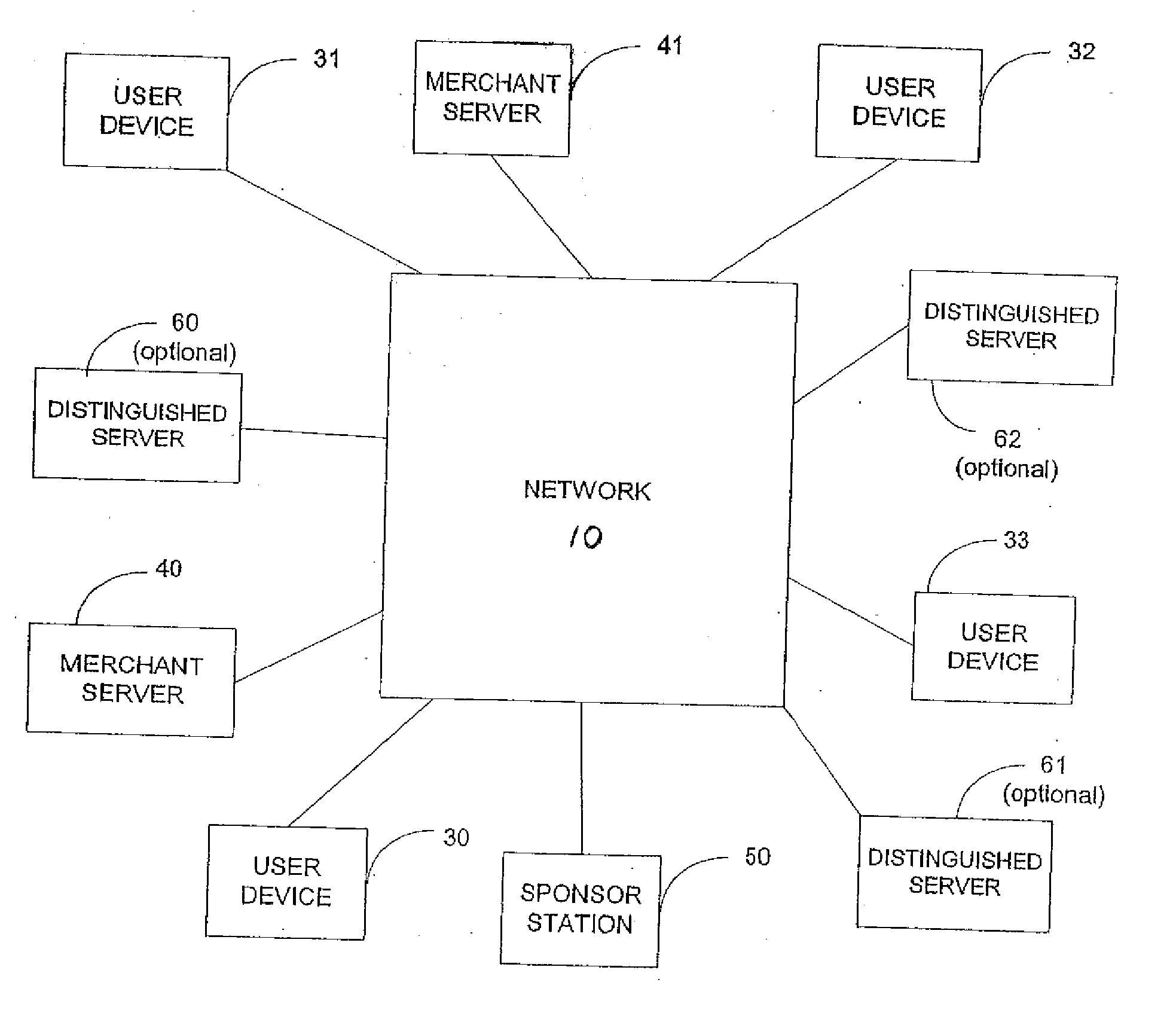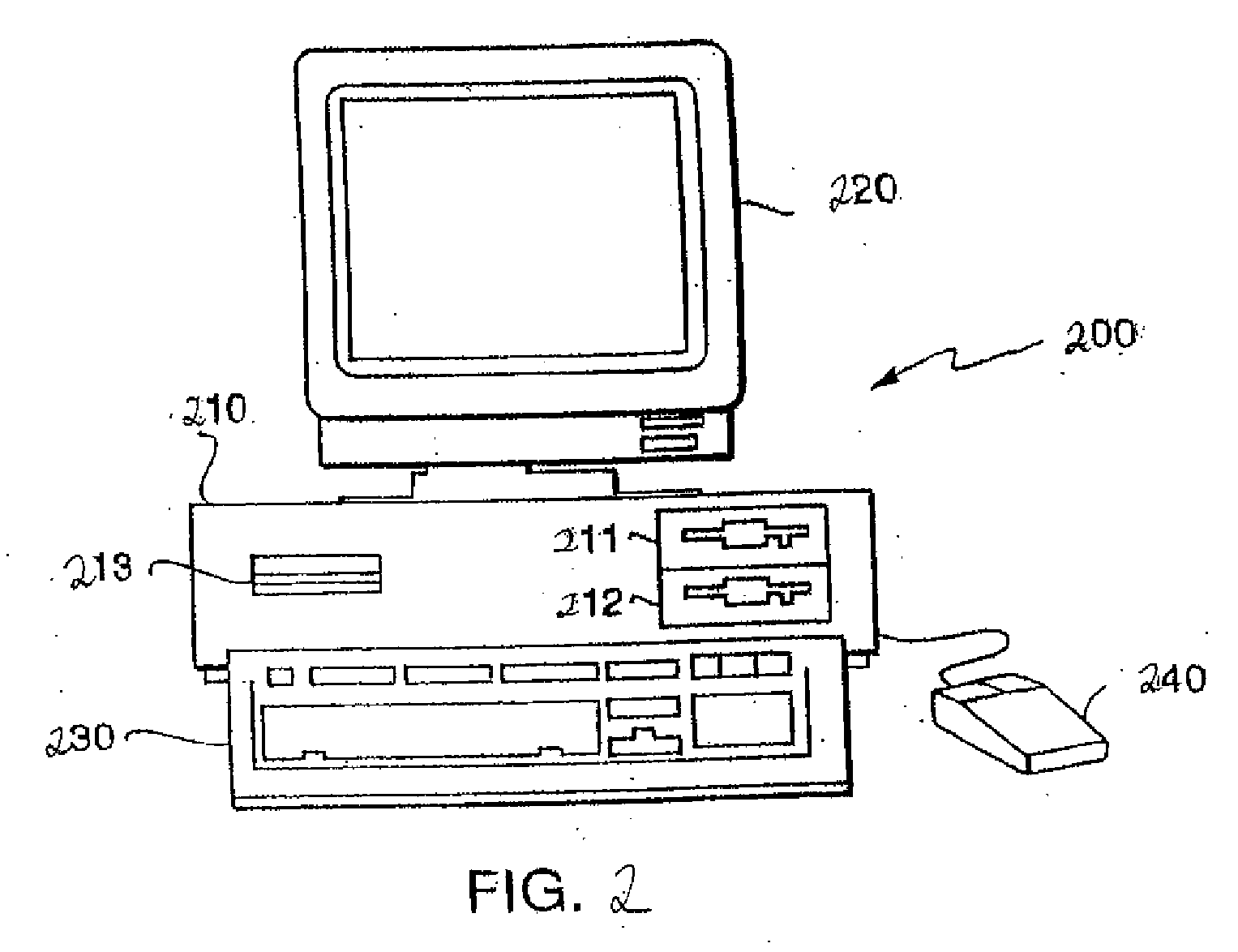Access control is an old problem, tracing its roots to the earliest days of computers.
This simple scheme suffers from various problems.
A second problem with this approach is that when Alice enters her
password it travels from her terminal to the authenticating computer in the clear, and Eve could potentially eavesdrop.
In this example as F(apple23) is a
one way function, computing XD45DTY from apple23 is easy, but as it is a “
one way function”, the reverse is believed to be computationally difficult or close to impossible.
However, this approach, while addressing the problems due to the storage of the
password on the authenticating computer, does not address the problem of the
password traveling in the clear.
The passwords are transmitted in the clear, thus token techniques are subject to man-in-the-middle attacks.
As will be recognized by those of ordinary skill in the art, this particular approach is undesirable due to it being susceptible to a
dictionary attack, as will be further discussed below.
Smart card techniques are associated with certain problems.
These problems include the fact that the techniques are costly to implement, due to hardware costs.
Further, a lack of readers makes use of a user's
smart card difficult, and smart cards themselves are subject to loss.
An attacker who does not know K, and sees C, cannot successfully decrypt the message M, if the underlying algorithms are strong.
Symmetric key systems have always suffered from a major problem—namely how to perform
key distribution.
This is simply because in practice all known asymmetric systems are fairly inefficient, and while they are perfectly useful for encrypting short strings such as K, they are inefficient for large messages.
With digital signatures this is not possible since only the sender has knowledge of the sender's private key required to compute the signature.
The verifier can only verify the signature, but not generate it.
The process for getting and storing the binding [Alice, Ealice] which binds Ealice to Alice is tricky.
Asymmetric key cryptosystems have been around for a long time, but have found limited use.
The primary reasons are twofold: (a) the private key D in most systems is long, which means that users cannot remember them, and they have to either be stored on every terminal a user uses, or carried around on smart cards or other media; and (b) the infrastructure for ensuring a
certificate is valid, which is critical, is cumbersome to build, operate, and use.
This clearly does not scale well to an environment with millions of users.
A later technique proposed to validate certificates was to require that one inquire about the validity of a
certificate on-line, which has its own associated problems.
Further, if the
server is informed that a particular ID has been suspended or revoked, then it will cease to perform its part of the operation for that user, and consequently no further signatures can ever be performed.
This is because although the technical mechanism is much the same, it now requires users to manage certificates and, unless they use a split private key, long private keys which has proven to be difficult.
This is inaccurate because, if they are used carefully, passwords can actually achieve “strong” security.
Although the attacker did not
gain access, now legitimate users cannot access their own accounts either, creating a denial of service problem.
The
system is only vulnerable to this
attack if it is true that M has some predictable structure.
As discussed above, many of the existing split private key systems that address these problems rely upon expensive hardware.
Because of this and other reasons, such systems have failed to
gain widespread support.
In practice users often have no absolute guarantee that the website to which they submit these credentials, is in-fact the website with which the user intends to communicate.
However, unseen by the user, is that this link actually terminates with “ .
Thus, the cookie does little, if anything, to enhance security against an MITM
attack.
If the user cannot be authenticated, e.g. because the hash result generated by the
web server does not match the signature included in the decrypted cookie, the
web server may deny access to some or all of the website.
This solution may help prevent a sophisticated attacker from impersonating a user from a network device, other than the user's network device, using a forged cookie, since the encrypted cookie should normally be very difficult, if not impossible, for even a sophisticated attacker to reconstruct.
However, there are practical and other problems with this proposed technique.
Also, it requires a change in user behavior, i.e. the user no longer enters the user's ID and password to login, so the user must be made aware of the change and migration to the proposed technique is not transparent to the user.
Furthermore, showing images and playing audio to the user to authenticate the website have not only the obvious problems of user-training and migration, but also are operationally complex.
Thus, for true protection against
phishing attacks, even if the attacker persuades the user to divulge user credentials or otherwise gains access to user credentials, or gains access to the user's network device, the attacker will not be able to reuse the user's credentials or operate the user's device to impersonate the user.
In double armored and triple armored mode, knowledge of the password alone is insufficient for
authentication, because additional factors are required for
authentication.
Furthermore, the
authentication is end to end, and there is nothing that a attacker's website can capture which will give the attacker knowledge of all the credentials necessary for authentication because the protocols require the attacker to demonstrate possession of credentials that are not actually transmitted to the imposter website but are required to construct the cryptographic keys used to establish the credentials.
Thus, even if the attacker is able to set up a website that looks like the intended website or launch as successful MITM
attack, the attacker will at best only be able to obtain and demonstrate possession of the crypto-key credentials, but not the underlying credentials necessary to construct the applicable key, and therefore will not be able to successfully impersonate the user in subsequent authentications.
On the other hand, unlike the double and triple armored
modes, each of which requires a small
client footprint, i.e. requires downloading, storage and / or execution of a small number of additional
executable instructions onto the user's network device, the single armored mode does not provide true protection against
phishing attacks.
However, it provides little protection against
phishing.
In general, those skilled in the art consider any solution without a
client footprint to be vulnerable to impostor websites and MITM attacks of even mediocre sophistication.
However, a problem arises if true protection against phishing, or something closer to true protection than that provided by the previously proposed encrypted cookie technique or single armored mode described above, is desired but, at the same time, the user or sponsor will not accept any solution with a
client footprint.
In such cases, the problem has generally been considered insurmountable, and therefore a large segment of the user
population lacks true phishing protection.
 Login to View More
Login to View More  Login to View More
Login to View More 


